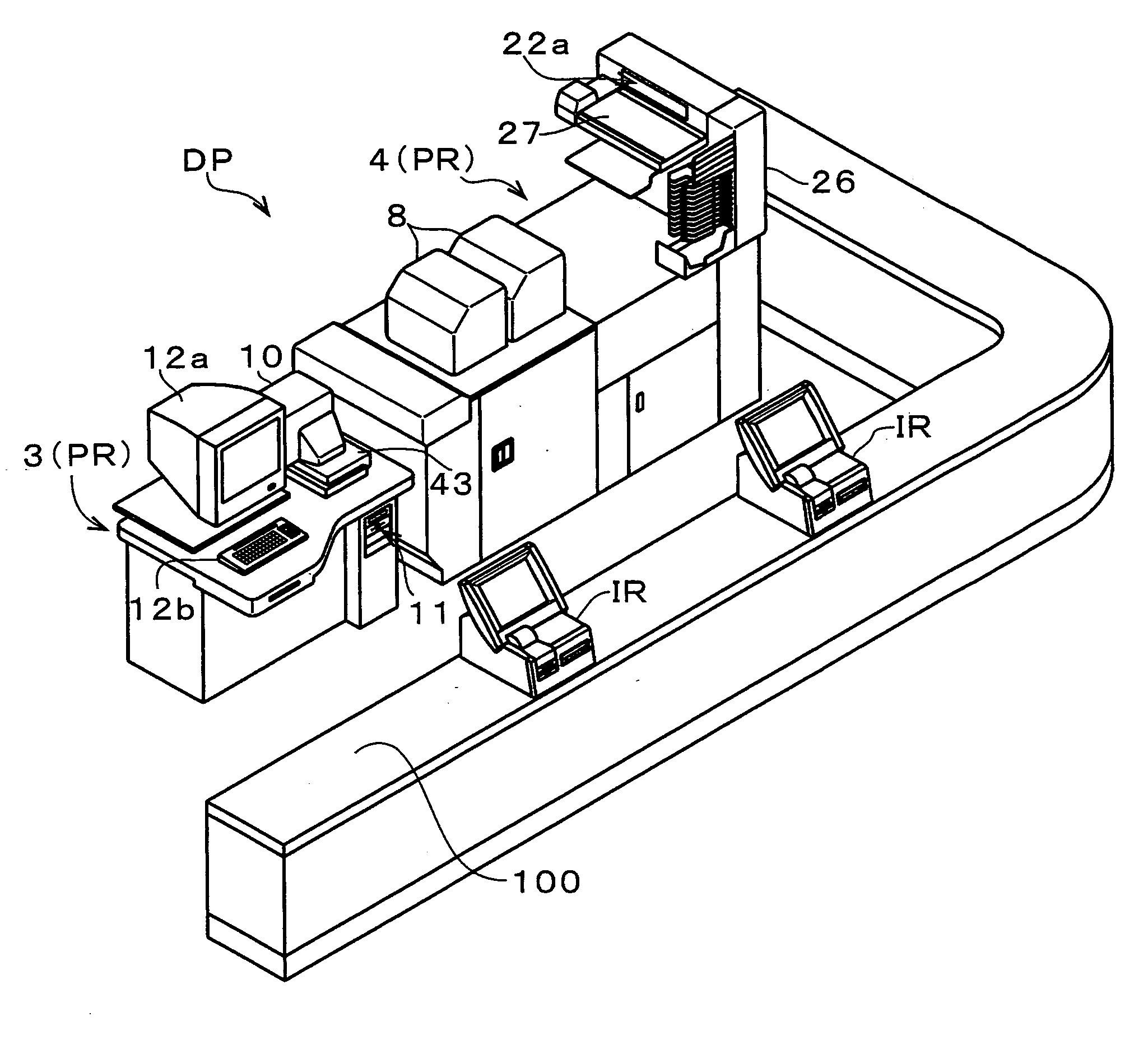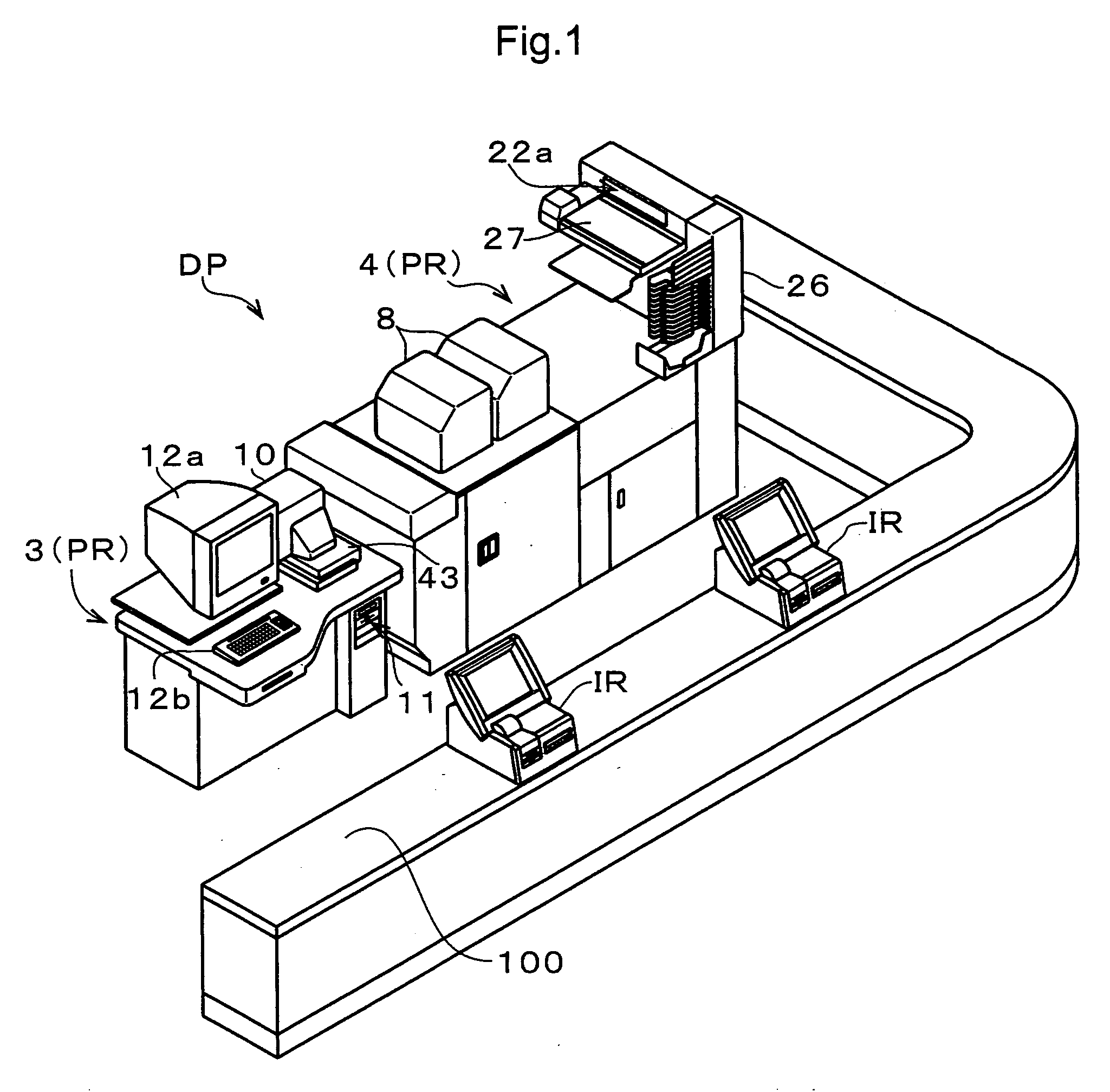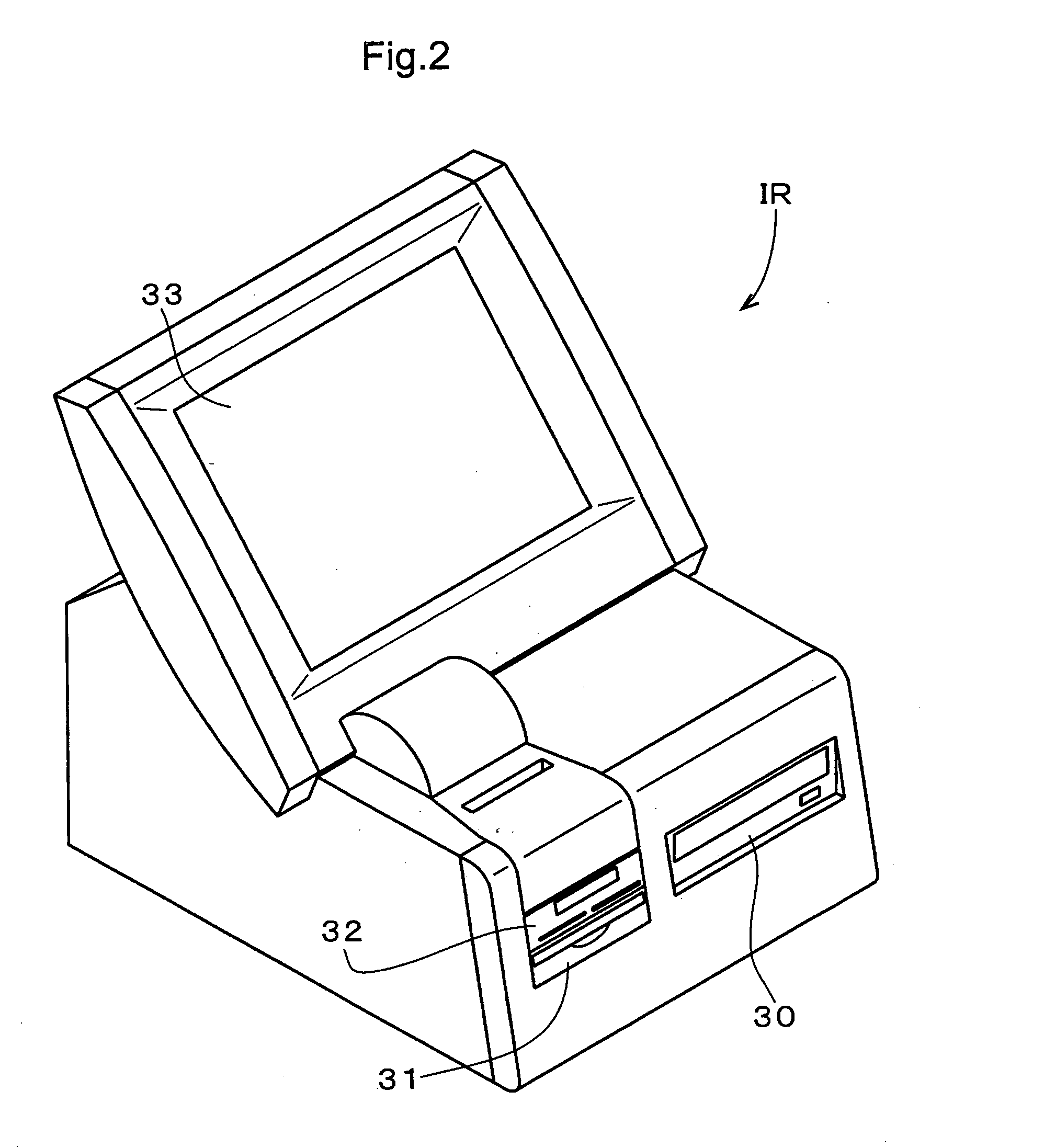[0007] The present invention has been made in view of the above-described state of the art. A primary object of the present invention is to provide a photographic printing system which allows faithful
reproduction of front print information added to the original photographic print in a reprint, without inviting disadvantageous complexity in handling.
[0013] With the above-described construction, when image data of a photographic image to be reprinted is retrieved from the recording medium, the front printable information which was printed in the image face of the original print can be obtained automatically. Therefore, the invention has achieved the intended object of providing a photographic printing system which allows faithful
reproduction of front printable information added to the original photographic print in a reprint, without inviting disadvantageous complexity in handling.
[0014] According to one preferred embodiment of the present invention, the information file written by the writing device contains only a portion of the front printable information which portion was actually printed in the original print. Namely, with respect to the writing of the information file in the recording medium, it is conceivable for the information file to contain the entire front printable information retrieved from the recording medium or to contain additionally an identification code for each piece of the front printable information, the identification code being indicative of whether this piece of information was actually printed in the original print or not. However, with the above-proposed construction that the writing device contains only a portion of the front printable information which portion was actually printed in the original print, in a reprinting operation, it is possible to identify the information to be front-printed only by reading the contents of the information file. Hence, the operation required for reproduction of the front printable information can be further simplified.
[0015] The present invention will be further advantageous if said
image storage medium is a storage medium for storing photographic film images acquired by a
digital camera or a photographic film having a magnetic recording function. That is, in the art of
digital camera, the industry has proposed a system referred to as “DPOF” (Digital Print Order Format) (standardized format system proposed by Canon Inc., Eastman Kodak Company, Fuji Photo Film Co., Ltd. and Matsushita Electric Industrial Co., Ltd, the system allows recording in a recording medium customer's order information such as customer's specification of frames desired to be printed, the number of prints to be made from each desired frame from images acquired by a digital camera or a desired “comments” to be added to a frame, etc.). This system allows a customer to write such customer's print order information into an image storage medium, e.g. a “
flash memory”, together with a photographic image. Then, the customer can advise a photo shop that such information as a date of photography (i.e. front printable information) should be printed in an image face (front face) of the photographic print together with the photographic image associated therewith. Further, as an alternative of such print order information described above, there is known a
JPEG file according to EXIF (Exchangeable Image
File Format), i.e. an “EXIF file”, which has been commonly established as an image data compiling format. This EXIF file can contain in a “tag” such additional information as a date of photography or customer's desired comments. In correspondence with these systems, the industry has come up with many photographic printing systems adapted therefor which allow printing of such front printable information contained in an image file in an image face of a photographic print together with the photographic image at the time of making the print. On the other hand, in the art of more “conventional” photography, there is available a new type of photographic film such as Ix240 type film, which is capable of magnetically recording such additional information (front printable information), e.g. a date of photography, in a magnetic recording track provided therein. And, there also exist many photographic printing systems adapted to this new type of film. In this case too, it is possible to obtain the actually printed front printable information from the film. Therefore, if the present invention is used in such cases for printing desired information in an image face of a photographic print by using a photographic image acquired by a digital camera or a photographic image recorded in the photographic film having the magnetic recording function, it is possible to obtain the actually printed front printable information from the information file in the storage medium or the magnetic
data recording track of the photographic film. Hence, the faithful reproduction of such information can be readily realized in a reprint.
[0016] Advantageously, said recording medium is a CD-R. CD-R is one of well-known non-rewritable
recording media which prohibit physical deletion of data once written therein and
rewriting the data with new data and which are available at low costs. Of such non-rewritable
recording media, the market price of CD-R has been reduced significantly. Therefore, by utilizing the CD-R medium, the service of providing a recording medium recording image data can be provided at extremely low costs. Hence, a photo shop can provide the data image providing service to a customer and receive a reprint order from a customer, by taking
advantage of this inexpensive medium. And, in such case, the photo shop or the photo lab can automatically obtain, from the CD-R medium, the information to be reproduced in a reprint.
 Login to View More
Login to View More  Login to View More
Login to View More 


